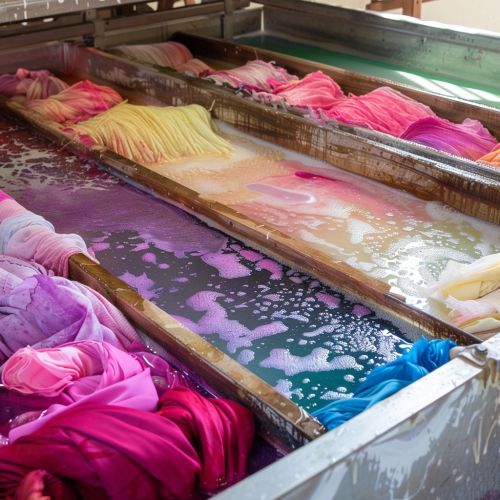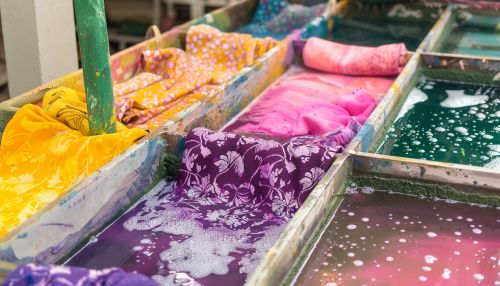Synthetic Dye
Introduction
Synthetic dyes are organic compounds used to impart color to materials such as textiles, plastics, and food. These dyes are artificially manufactured through chemical processes, distinguishing them from natural dyes derived from plants, minerals, or animals. The development of synthetic dyes revolutionized various industries by providing a broader spectrum of colors, improved colorfastness, and cost efficiency. This article delves into the history, chemistry, types, applications, and environmental impact of synthetic dyes.
History
The history of synthetic dyes began in the mid-19th century with the accidental discovery of mauveine by William Henry Perkin in 1856. Perkin, an English chemist, was attempting to synthesize quinine, an anti-malarial drug, when he stumbled upon the first aniline dye. This discovery marked the beginning of the synthetic dye industry, leading to the development of numerous other dyes such as indigo, alizarin, and azo dyes.
The commercialization of synthetic dyes rapidly expanded, driven by the textile industry's demand for vibrant and durable colors. By the late 19th and early 20th centuries, synthetic dyes had largely replaced natural dyes in industrial applications.
Chemistry of Synthetic Dyes
Synthetic dyes are classified based on their chemical structure and the method of application. The primary classes include azo dyes, anthraquinone dyes, triphenylmethane dyes, and phthalocyanine dyes.
Azo Dyes
Azo dyes are characterized by the presence of one or more azo groups (-N=N-) linking aromatic rings. They are the largest class of synthetic dyes, accounting for over 60% of commercial dyes. Azo dyes are synthesized through diazotization and coupling reactions, which allow for a wide range of colors. Common examples include methyl orange and Congo red.
Anthraquinone Dyes
Anthraquinone dyes are derived from anthraquinone, a polycyclic aromatic hydrocarbon. These dyes are known for their excellent lightfastness and are commonly used in textiles and plastics. The synthesis of anthraquinone dyes involves the oxidation of anthracene or the Friedel-Crafts acylation of benzene derivatives. Examples include alizarin and disperse blue 1.
Triphenylmethane Dyes
Triphenylmethane dyes contain a central carbon atom bonded to three phenyl groups. These dyes are known for their bright and intense colors but generally have poor lightfastness. They are often used in applications where light exposure is minimal, such as in inks and biological stains. Examples include crystal violet and malachite green.
Phthalocyanine Dyes
Phthalocyanine dyes are based on the phthalocyanine structure, a large, planar aromatic macrocycle. These dyes exhibit excellent lightfastness and chemical stability, making them suitable for a variety of applications, including textiles, plastics, and inks. Phthalocyanine blue and phthalocyanine green are prominent examples.
Applications
Synthetic dyes are used in a wide range of industries due to their versatility and cost-effectiveness. Key applications include:
Textile Industry
The textile industry is the largest consumer of synthetic dyes. Dyes are applied to fibers through various methods, including dyeing, printing, and coating. The choice of dye and application method depends on the type of fiber (e.g., cotton, wool, polyester) and the desired properties of the finished product.
Plastics and Polymers
Synthetic dyes are used to color plastics and polymers, providing vibrant and durable hues. These dyes are incorporated into the polymer matrix during the manufacturing process, ensuring uniform coloration. Applications include packaging materials, automotive components, and consumer goods.
Food and Beverages
Food dyes are a subset of synthetic dyes specifically formulated for use in food and beverages. They enhance the visual appeal of products and are subject to stringent regulatory standards to ensure safety. Common food dyes include tartrazine and allura red.
Cosmetics
Synthetic dyes are widely used in cosmetics to provide color to products such as lipsticks, eyeshadows, and nail polishes. These dyes are selected for their safety, stability, and ability to produce a wide range of shades.
Environmental Impact
The production and use of synthetic dyes have significant environmental implications. The dyeing process often involves large quantities of water and chemicals, leading to pollution and resource depletion. Effluents from dyeing operations can contain toxic substances, including heavy metals and aromatic amines, which pose risks to aquatic ecosystems and human health.
Efforts to mitigate the environmental impact of synthetic dyes include the development of eco-friendly dyes, improved wastewater treatment technologies, and the adoption of sustainable practices in the textile industry.
See Also


